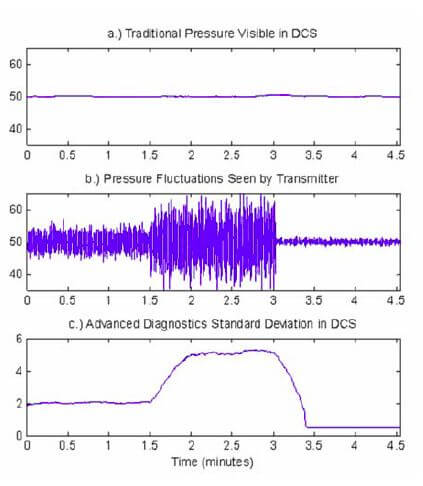Furnaces, fired heaters, boilers and other process units requiring burners to manage are common across many process industries such as refining, chemicals, petrochemicals, and power. Recognizing and reacting to flame instability is critical since a flameout condition is dangerous and often results in a costly shutdown initiated by the burner management system.
Emerson’s John Miller, a senior engineer for the Rosemount pressure diagnostics team gave a presentation, Furnace Flame Instability Detection with Advanced Pressure Diagnostics at the 2010 AIChE Spring Meeting. I don’t have a link for that paper but do for a similar flame instability technical note that he has written.
Traditional methods of flame monitoring include UV flame detectors, chemical analyzers, temperature measurement, and photographic techniques. These methods have some limitations either in being reactive in spotting a flameout condition or in being difficult to install and maintain.

Advanced statistical process monitoring-based diagnostics in Rosemount 3051S transmitters provide a good way to alert operators of a flame flicker condition to take action before a flameout occurs. Most burner units have one or more pressure transmitters at the firebox to measure the inlet draft pressure.
In an earlier post, A High-Speed, Statistical View for Better Decision Making, I described how this diagnostic works. The picture shows a shorthand version where the pressure transmitter has a much higher resolution (22 samples/second) than does the control system, which is typically a sample/second or less.
For detecting unstable flame conditions, even while the draft pressure in the burner remains constant, the standard deviation increases. Based upon this abnormal condition, an alert can be set on a configurable standard deviation limit and passed back to the operator. This advanced notice provides time to take immediate action to adjust the fuel/air mixture before a flameout condition and possible unit shutdown occurs.
John described two burner installations where these advanced diagnostics were put to the test. Each installation had multiple burners in furnaces. In both cases, every one of the pressure transmitters in the furnaces could detect a flame flicker condition on any of the burners. Tests were done with the transmitters installed at different heights, running the furnaces at different heat rates, and varying the fuel types. In all the cases, the diagnostics provided early warning of a flame flicker condition.
The post, Burner Management Systems with DeltaV SIS highlights a presentation where a DeltaV SIS process safety system is used in a burner management application. Since the standard deviation is available as a HART digital value, it can also be passed to safety instrumented systems that read HART digital signals, such as DeltaV SIS.
